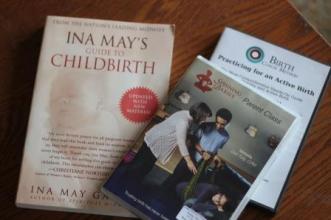
I recently worked on updating the information I give to clients on Gestational Diabetese screening during pregnancy. Compared to 12 years ago when I was first delving into midwifery studies, there is so much more helpful information out there about this subject! For this month’s blog post, I decided to share my updated “informed consent” handout (this is something that each client recieives in order to help them make a truly informed choice regarding their screening options), as well as some links that may be helpful for those who are wanting to research this topic further.
Informed Consent Regarding Glucose Testing and Screening for
Gestational Diabetes
What is Gestational Diabetes?
John Hopkins Medicine describes Gestational Diabetes as follows: Gestational diabetes mellitus (GDM) is a condition in which a hormone made by the placenta prevents the body from using insulin effectively. Glucose builds up in the blood instead of being absorbed by the cells.
Unlike type 1 diabetes, gestational diabetes is not caused by a lack of insulin, but by other hormones produced during pregnancy that can make insulin less effective, a condition referred to as insulin resistance. Gestational diabetic symptoms disappear following delivery. Approximately 3 to 8 percent of all pregnant women in the United States are diagnosed with gestational diabetes.
Although the cause of GDM is not known, there are some theories as to why the condition occurs: The placenta supplies a growing fetus with nutrients and water, and also produces a variety of hormones to maintain the pregnancy. Some of these hormones (estrogen, cortisol, and human placental lactogen) can have a blocking effect on insulin. This is called contra-insulin effect, which usually begins about 20 to 24 weeks into the pregnancy.
As the placenta grows, more of these hormones are produced, and the risk of insulin resistance becomes greater. Normally, the pancreas is able to make additional insulin to overcome insulin resistance, but when the production of insulin is not enough to overcome the effect of the placental hormones, gestational diabetes results.
For more information on understanding Gestational Diabetes and Insulin Resistance during pregnancy, I highly recommend checking into these websites: EvidenceBasedBirth.com and LilyNicholsRDN.com, and by reading Real Food for Pregnancy by Lily Nichols (available through my office lending library).
Risks Associated with GDM for mother and baby:
Increased risk of developing Pre-eclampsia
Increased risk of developing Type 2 Diabetes
Maternal injury
Increased risk of Cesarean section
Shoulder dystocia
Macrosomia (infant weight over 8lb 13 oz)
Neonatal hypoglycemia
Neonatal jaundice
Stillbirth
NICU stay
Birth injury
Predisposing Risk Factors can include:
Pre-pregnancy BMI >25
Family history of diabetes
GDM in previous pregnancy
Polycystic Ovarian Syndrome (PCOS)
Chronic hypertension
Maternal age over 25
Ethnicity (African-American, Native American, Hispanic, South & East Asian, Pacific Islander)
Previous macrosomic infant
History of Cardiovascular disease
Poor nutrition
Potential Signs and Symptoms of GDM:
Not all mothers will have any symptoms, but these are indicators of the possible presence of GDM:
Polyuria (excessive urinary output)
Polydipsia (extreme thirst)
Weakness
Poor healing/susceptibility to infections
Size large for dates
Recurrent glucose in urine
Recurrent yeast infections
Ketones in urine
Excessive weight gain
Polyhydramnios (excessive amniotic fluid)
Polyphagia (excessive hunger)
What are my testing options?
The American College of Obstetricians (ACOG) recommends universal screening for every mom between 24-28 weeks for pregnancy. Women with a history of GDM or have high-risk factors are encouraged to screen as early as possible in pregnancy, and typically Glucola is used as the glucose load. Due to the preservatives, dyes and other ingredients found in Glucola, other glucose options are offered, such as a dye-free glucose drink, or the option of consuming 28 jelly beans per the article published by American Journal of Obstetrics and Gynecology. If opting for either of these tests, it is recommended to eat an average of 150 grams of carbohydrates daily for three days before testing. The standard testing procedure is as follows:
- 1 hour Oral Glucose Challenge test: This involves drawing blood for blood sugar testing one hour after consuming a 50g glucose load (non fasting). Blood sugar levels should be under 140mg/dl. If the blood sugar levels are higher than this, then a 3 hour test is recommended to confirm or rule out a diagnosis of GDM.
- 3 hour Oral Glucose Tolerance Test (GTT): This four-step test is performed after fasting for at least 12 hours, and includes drinking a 100g glucose drink. Blood is drawn fasting, and then again at 1, 2 and 3 hours after drinking the glucola. If two or more levels are out of range, the mother is diagnosed with GDM. Consultation with a physician is recommended, and transfer of care may become necessary should diet changes be insufficient to keep sugar levels within target ranges.
During recent years, more physicians are becoming comfortable with an alternative to the above traditional protocol as described here by Rebecca Dekker at Evidence Based Birth (near the end of the article):
Home blood sugar monitoring: “Another alternative could be for people to monitor their blood sugar levels at home and discuss the results with their care provider. This is another controversial way to screen for GDM. We didn’t find any studies on GDM screening that compared home blood sugar monitoring versus a standard oral glucose drink.
However, we hear of some people using this method. Basically, they are following a similar path that people do when they’ve been actually diagnosed with GDM. Usually, after a GDM diagnosis, mothers monitor their blood sugar levels four times a day, once after fasting (first thing in the morning) and again after each meal (AGOG, 2018).
The ADA and ACOG recommend that fasting blood sugar levels should be <95 mg/dL, and post-meal blood sugar levels should be <140 mg/dL at 1-hour. Other recommendations for healthy blood sugar level targets during pregnancy are even lower. For example, the California Diabetes and Pregnancy Program (CDAPP) Sweet Success recommends fasting/premeal levels at <90 mg/dL and post-meal levels at <130 (Shields and Tsay, 2015).
Monitoring your blood sugar levels at home might be an option for someone who cannot take a glucose test because of the side effects, or prefers not to drink the glucose solution. However, home blood sugar monitoring is demanding and has some drawbacks. Mothers may have to purchase their own testing kits, and they have to remember to set alarms and carry their testing supplies with them throughout the day. Some people would consider it a major downside that blood sugar monitoring requires constant finger sticks, although others may not mind. Since home blood sugar monitoring is usually done after GDM diagnosis, there is no clear-cut standard for screening/diagnosing gestational diabetes based on home blood sugar checks. It’s important to discuss any results with a care provider to determine if testing can be stopped, if home monitoring should be continued, or if consistent high values mean that treatment for GDM is needed. Also, with this method, it is important that mothers follow their normal diet while testing, to get a “real-life” picture of their blood sugar results over time.”
While this testing method has gained acceptance in some medical communities, it is important to note that it has not been officially documented as a standard for diagnosing GDM. However, research is ongoing, and this method does provide you with an accurate day-by-day picture of how your body is responding to your normal diet. For clients who choose to do home glucose testing (whether in addition to or in place of the Glucose Challenge Test), I am happy to provide you with a glucometer, supplies and a chart that you can use to track your glucose readings for two weeks.
What if I have Gestational Diabetes?
Many women are able to control GDM through regular exercise and dietary changes. For clients who test positive for GMD, I will ask you to read Lily Nichol’s books Real Food for Gestational Diabetes and Real Food for Pregnancy, and we will discuss a plan for your care, including necessary diet changes and logging, home glucose monitoring, and exercise routines. If additional insulin is needed to control sugar levels, this will result in a transfer of care, as insulin-dependence significantly raises risk factors making a homebirth not a safe option for mother and baby.
Conclusion: Informed Consent
I highly recommend checking out these websites for more information on Gestational Diabetes Screening:
- Aviva Romm on Routine Glucose Testing in Pregnancy
- Evidence Based Birth on Diagnosing Gestational Diabetes
I also would encourage you, regardless of your choice to screen for GDM, to spend time reading Lily’s Nichol’s books (mentioned above) and implementing her dietary suggestions for pregnancy. Excellent information is available at her website: LilyNicholsRDM.com
As an expectant mom, it is your responsibility to choose first whether to screen for Gestational Diabetes, and if so, which method of screening to utilize. This document is intended to begin the conversation and aid you in researching what is best for your health and the health of your baby, and I welcome your further discussion and questions at any time.
In your Client Information Folder you will find a document entitled “Consent & Waivers for Common Procedures”, on which is listed screening for Gestational Diabetes. Please indicate your choice on this form, after you have spent time reading the risks and benefits of screening and the type of screening.
Did you find this information helpful? I’d love to hear about your experience with GDM and your testing/treatment options! If you’re wanting to research this topic further, here’s some links to other helpful posts, many written by moms sharing how they made a decision regarding GDM screening for their pregnancies (note, many of these posts are personal opinons shared for your consideration, though they may not include documented studies or be supported by general medical literature):
- Evidence Based Birth Podcast on Diagnosing Gestational Diabetes
- Alternatives to the Glucola Drink
- BirthFit: Glucola Alternatives
- Gestational Diabetes and Natural Alternatives to Screening
- Wellness Mama on Blood Sugar Monitoring
If you have more to add, or resources to share, feel free to comment below!











 Before I had children, I would have said that breastmilk is the absolute best choice for feeding a baby, and that a mom should try everything possible to breastfeed…and that if you tried hard enough, you would be able to succeed. However, once I entered the realm of motherhood, and actually experienced the things I had only previously read/observed/seen, I have learned that ideals are not always reality. My youngest baby just turned 10 months old, and I have once again faced the challenges of tongue-ties, latch issues, lack of sufficient supply, colic, fussiness, food sensitives, and more. Some of those subjects will be material for future posts, but I mention them to give you the background as to what inspired this post. As we have worked through these challenges, my husband has encouraged me that perhaps the things we learned will benefit others, so this is an attempt to do just that!
Before I had children, I would have said that breastmilk is the absolute best choice for feeding a baby, and that a mom should try everything possible to breastfeed…and that if you tried hard enough, you would be able to succeed. However, once I entered the realm of motherhood, and actually experienced the things I had only previously read/observed/seen, I have learned that ideals are not always reality. My youngest baby just turned 10 months old, and I have once again faced the challenges of tongue-ties, latch issues, lack of sufficient supply, colic, fussiness, food sensitives, and more. Some of those subjects will be material for future posts, but I mention them to give you the background as to what inspired this post. As we have worked through these challenges, my husband has encouraged me that perhaps the things we learned will benefit others, so this is an attempt to do just that!

















